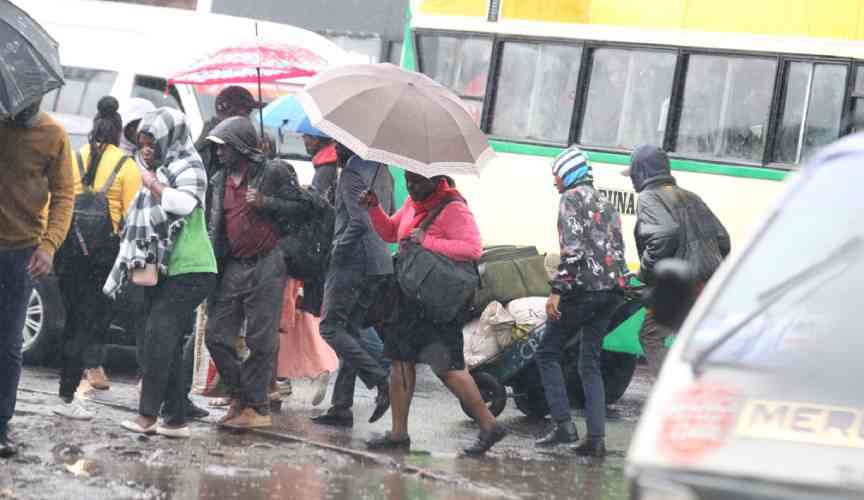In all cities in Kenya, vehicular traffic is growing, outstripping the available transport infrastructure. Much as there have been significant investments to improve the road network, there is no respite, and every major town in the country experiences traffic jams, with Nairobi bearing the greatest brunt.
The current El Nino phenomenon will undoubtedly exacerbate the situation and gridlock will be on the lips of Kenyans for the next few months.
We are well aware of the economic costs of traffic congestion, and various estimates indicate that the country could be losing Sh50 million daily.
However, less known are the public health consequences of traffic delays yet they are myriad. The air we breathe in metropolitan areas is heavily polluted, mostly due to vehicle exhaust emissions resulting from stationary traffic.
In essence, these emissions make every city dweller a smoker!
Air pollution is lethal and expensive, and in the United States, a recent study by Harvard University showed that traffic congestion in 83 of the nation’s largest urban areas contributes to more than 2,200 premature deaths annually, costing the health system at least $18 billion.
Children living in high exhaust emission areas score poorly on intelligence tests and are more prone to depression, anxiety and attention problems than children growing up in cleaner air. It’s very likely that here in Kenya, the situation is worse.
We also know that breathing street-level fumes for just 30 minutes can intensify electrical activity in brain regions responsible for behaviour, personality and decision-making, leading to stress. Even without the pollution, the fact that people wake up as early as 4am in order to get to work by 8am is worrying.
We are gradually generating a workforce that is sleep-deprived that is vulnerable to fatigue, depression, increased blood pressure and other maladies. Further, gridlock is a natural stressor, particularly since it is unlikely that motorists caught up in traffic jams engage in such therapeutic practices like prayer, meditation, song or banter.
A nation of stressed people reduces the quality of life and has other social and economic consequences.
One major paradox for city motorists, otherwise enjoying the trappings of a middle-class status is that traffic congestion reduces quality of life, albeit gradually.
Each Nairobi motorist, for example, sits in traffic for at least two hours daily resulting in lack of physical activity, a phenomenon that the World Health Organization has determined increases the risk of death by one-third.
The current increasing trends of non-communicable diseases such as obesity, diabetes and hypertension are telling and could be attributed at least in part, to reduced traffic flow. Talk about traffic-induced diseases.
Perhaps the most devastating and visible health effect of traffic jam is obstruction of emergency services. On a daily basis, motorists confront siren-blaring ambulances that struggle to navigate the heavy traffic.
In Europe, for example, the response time for a patient reporting a suspected heart attack to the arrival of an ambulance is eight minutes.
Stay informed. Subscribe to our newsletter
In Kenya, we don’t know how long it takes but at least in Nairobi it could well be over two hours, even with ambulances driving on the wrong side of the road. This is appalling and should prick our collective conscience as Kenyans.
We should accelerate efforts to reduce traffic congestion, if not for anything else but to safeguard the health of Kenyans.
It is good economics and it is good public health practice.
 The Standard Group Plc is a
multi-media organization with investments in media platforms spanning newspaper
print operations, television, radio broadcasting, digital and online services. The
Standard Group is recognized as a leading multi-media house in Kenya with a key
influence in matters of national and international interest.
The Standard Group Plc is a
multi-media organization with investments in media platforms spanning newspaper
print operations, television, radio broadcasting, digital and online services. The
Standard Group is recognized as a leading multi-media house in Kenya with a key
influence in matters of national and international interest.
 The Standard Group Plc is a
multi-media organization with investments in media platforms spanning newspaper
print operations, television, radio broadcasting, digital and online services. The
Standard Group is recognized as a leading multi-media house in Kenya with a key
influence in matters of national and international interest.
The Standard Group Plc is a
multi-media organization with investments in media platforms spanning newspaper
print operations, television, radio broadcasting, digital and online services. The
Standard Group is recognized as a leading multi-media house in Kenya with a key
influence in matters of national and international interest.








